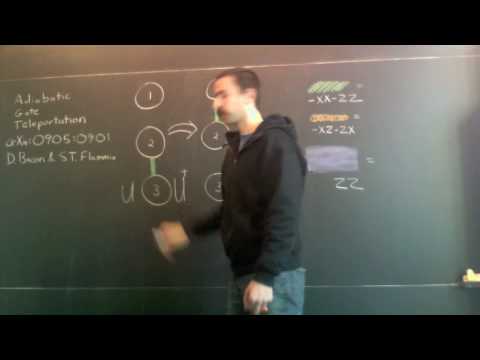Welcome to Quantiki
Welcome to Quantiki, the world's leading portal for everyone involved in quantum information science. No matter if you are a researcher, a student or an enthusiast of quantum theory, this is the place you are going to find useful and enjoyable! While here on Quantiki you can: browse our content, including fascinating and educative articles, then create your own account and log in to gain more editorial possibilities.
Add new content, such as information about upcoming quantum events, open positions for quantum scientists and existing quantum research groups. We also encourage to follow us using social media sites.
A Research Fellow is to be appointed at Birmingham, to start by October 2009, on my EPSRC project to apply techniques of geometric logic to the topos approaches to quantum theory (Isham and Doering at Imperial, Landsman's group at Nijmegen).
The job is now posted online at Birmingham, application deadline 10th June 2009; go to http://www.hr.bham.ac.uk/jobs/ and search by post number 43408. There will be an advertisement on http://www.jobs.ac.uk/ shortly.
You can also find all that information on my website at
http://www.cs.bham.ac.uk/~sjv/geophysics.php
Authors:
Dave Bacon and Steven T. Flammia
The difficulty in producing precisely timed and controlled quantum gates is a significant source of error in many physical implementations of quantum computers. Here we introduce a simple universal primitive, adiabatic gate teleportation, which is robust to timing errors and many control errors and maintains a constant energy gap throughout the computation above a degenerate ground state space. Notably this construction allows for geometric robustness based upon the control of two independent qubit interactions.
Submitted by
Sflammia on Tue, 19/05/2009 - 17:45.
Submitted by
Editor on Wed, 13/05/2009 - 09:24.
QD Vision, based in Watertown, MA, is promoting a new LED-based lamp that it made with Nexxus Lighting of Charlotte, NC. Nexxus makes a lamp designed to screw into standard sockets used in recessed ceiling lighting. It consists of an array of white-light LEDs encircled by fins that remove excess heat. QD Vision adds an optic--a plastic cover with a special coating that snaps into place over the LEDs. It's that coating that makes the difference in the quality of the light.
Submitted by
Editor on Fri, 08/05/2009 - 07:03.
A team of physicists from Austria has sent pairs of entangled photons, which can be used to encrypt messages with complete security, between telescopes spaced 144km apart in the Canary Islands. The researchers say that preserving entanglement over this distance shows the feasibility of carrying out quantum cryptography using a worldwide network of satellites.
Authors:
M. B. Plenio and S. Virmani
We consider the possibility of adding noise to a quantum circuit to make it efficiently simulatable classically. In previous works this approach has been used to derive upper bounds to fault tolerance thresholds - usually by identifying a privileged resource, such as an entangling gate or a non-Clifford operation, and then deriving the noise levels required to make it `unprivileged'. In this work we consider extensions of this approach where noise is added to Clifford gates too, and then `commuted' around until it concentrates on attacking the non-Clifford resource.
Submitted by
Virmani on Mon, 27/04/2009 - 15:33.
Pages



